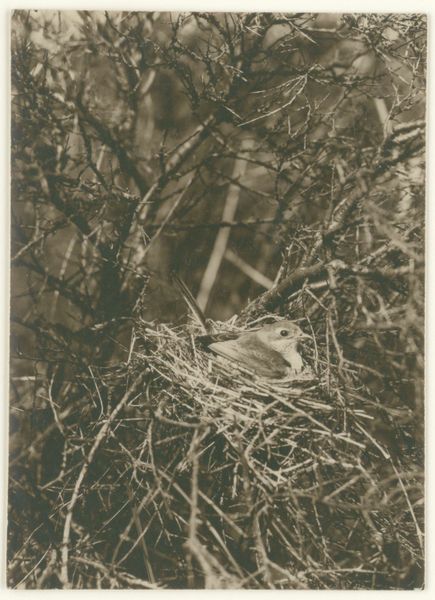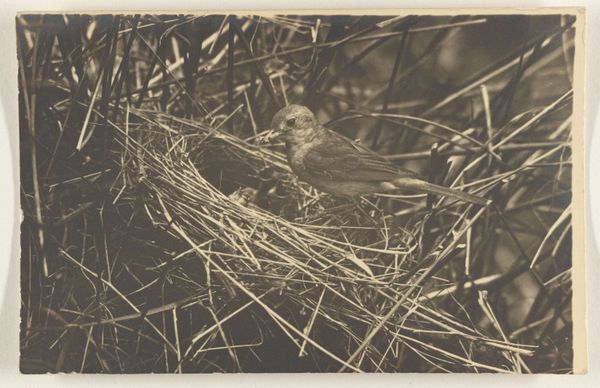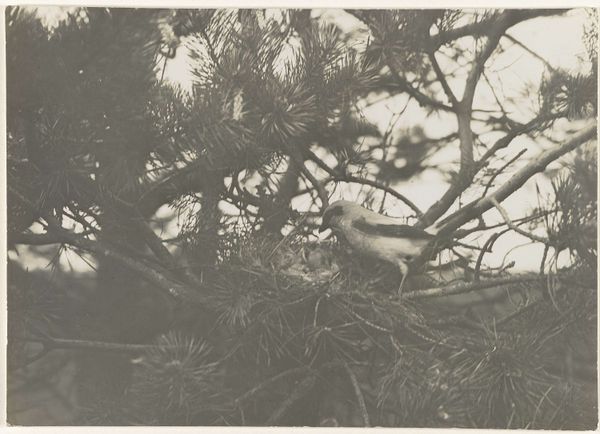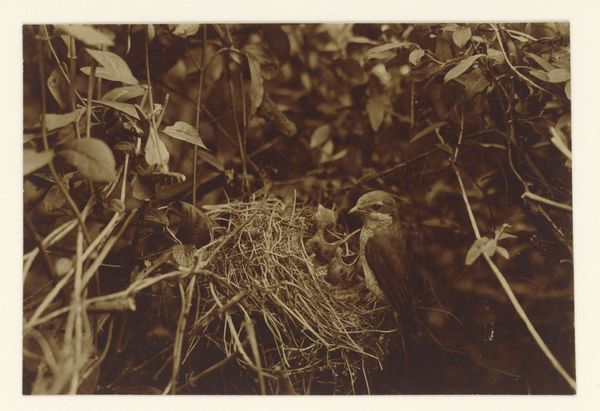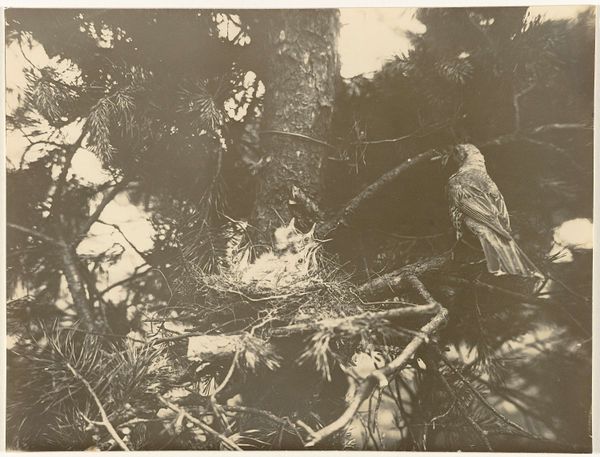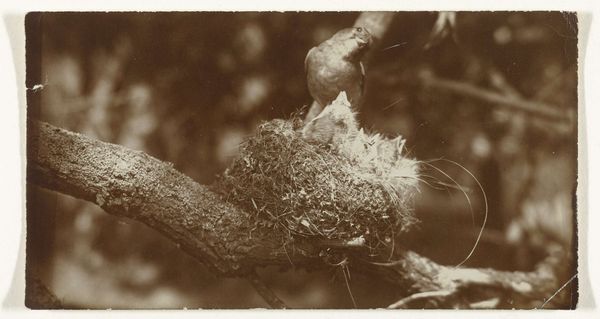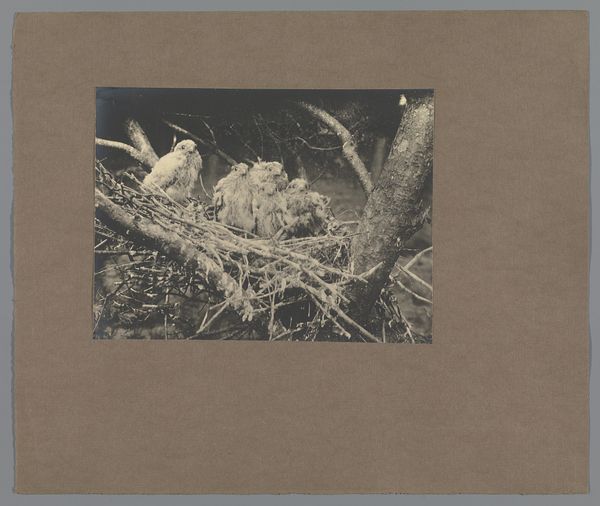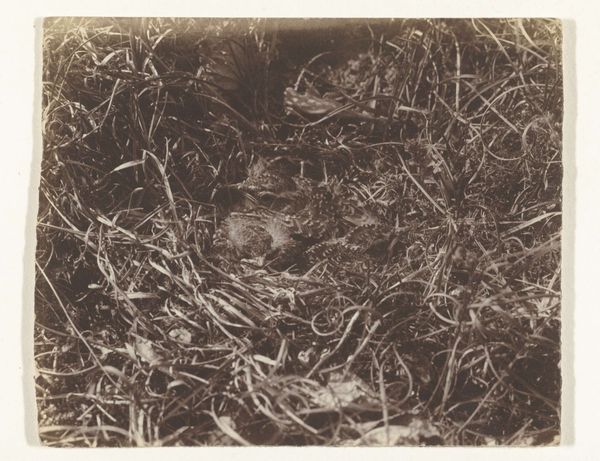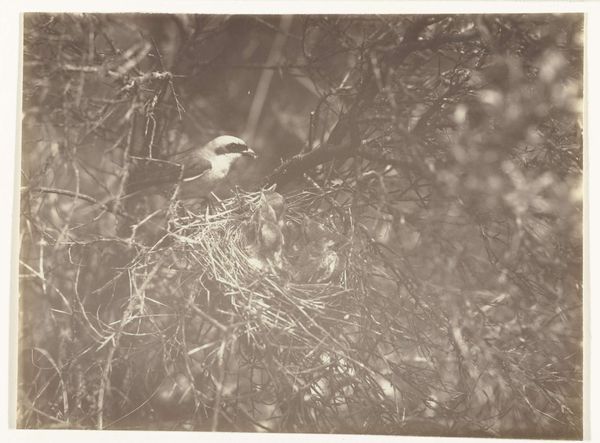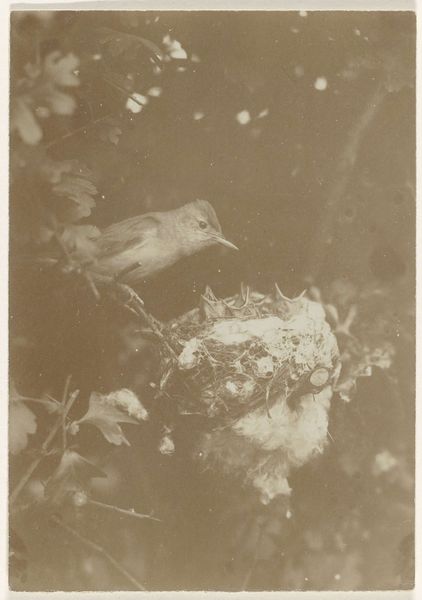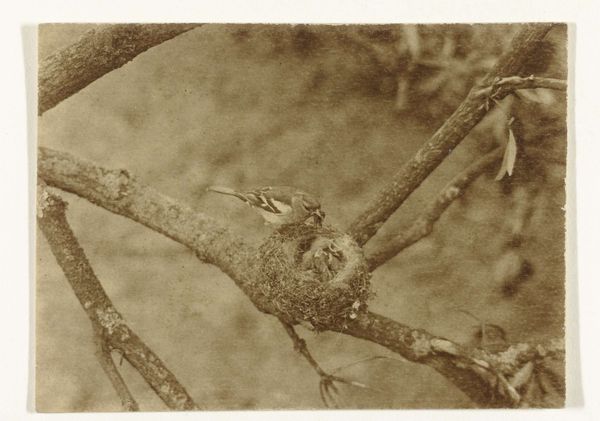
Dimensions: height 118 mm, width 168 mm
Copyright: Rijks Museum: Open Domain
Curator: This gelatin-silver print by Richard Tepe, titled "Tortelduif met jongen op haar nest (vogels)" – Turtle Dove with Young in Her Nest – likely dates from sometime between 1900 and 1930. It's currently held in the Rijksmuseum collection. Editor: There's a quiet intimacy here. The tones are soft, almost hazy, drawing your eye to the nest tucked amongst the branches. It feels both protected and vulnerable. Curator: The dove has, over time, represented varied emotional and symbolic connections. Think of peace, domesticity, devotion, even sacrifice. Which interpretation resonates most here, do you think, given this setting? Editor: It makes me consider the materials used to construct the nest itself: the twigs, leaves, bits of found objects – each scrap diligently collected and woven together to form a shelter. I imagine the dove's labor, the sheer effort to create this space for her young. It makes me wonder about the conditions in which Tepe captured the photograph. What resources were available to him? What influenced his composition? Curator: Naturalism as an aesthetic impulse was then emerging, prioritizing an unsentimental, accurate observation. While the image’s tones lend it some idealization, its clarity does also hint towards more scientific interests in capturing subjects such as these. Editor: Scientific documentation still has a perspective behind the lens though. The natural world doesn't become art on its own. I see a decision being made with every image created—about what is elevated for consideration. Tepe made a conscious decision to select this arrangement of light, this framing, to freeze this particular moment in time using a labor-intensive technique, right? Curator: Of course. And even that process becomes a narrative itself, a preservation of a fragile moment—motherhood, nascent life. What is selected, as you note, certainly speaks as loud as any absent subject matter here. Editor: It also connects with larger histories. It captures a particular era's fascination with the natural world through evolving means, even down to the photographic paper itself. Curator: Looking again, that's beautifully said. Perhaps Tepe's work then, both reveals and preserves a cultural moment framed within universal experiences of nature and family. Editor: Indeed, a small image offering insight into larger landscapes of practice and meaning.
Comments
No comments
Be the first to comment and join the conversation on the ultimate creative platform.
